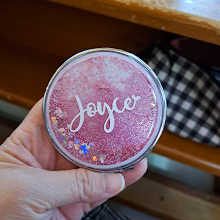I just had my fourth episode of plugged / blocked milk ducts during my breastfeeding journey for the past 4.5 months. The first episode actually morphed into mastitis, a very painful experience.
Thankfully, plugged ducts only happen to one breast at a time. If both sides are affected, there goes my baby's food. :S
A plugged or clogged milk duct usually feels like a hard, tender swelling in the breast which can vary in size from a pea to a peach and may feel painful while breastfeeding. The skin over the affected area may be red and the area around the plug may feel full even after a feeding.
Sometimes a small whitish-yellow milk plug can be seen at the opening of a duct on the nipple. Plugged ducts occur when milk flow is restricted, or there is a delay in removal of milk from the breast resulting in poor drainage of the breast.
Contributing factors may include:
- Missed or irregular feedings and/or an unusually long interval between feedings (a sudden long sleep stretch).
- Pressing the breast to provide nostril space for the baby.
- Wearing a tight or poorly fitting bra that impedes milk flow.
- Having an overabundant milk supply and insufficient breast drainage.
- A plugged nipple pore/nipple bleb (looks like a white head).
- Rapid weaning.
- Practicing vigorous upper arm exercise.
- Extreme exhaustion.
How to unclog milk ducts that caused painful engorgement?
1. Apply warm compress (hot water bottle / hot pads) to the affected area to loosen the plug.
2. Take a hot shower and let hot water flow over your shoulder to the affected breast.
3. Massage the affected breast while in the shower or between compresses, pressing with your thumb from behind the plug toward the nipple.
4. Soak the affected breast with in a mixture of 3 tablespoons of Epsom Salt and warm water for 5 minutes. Then, massage your areola and nipple with virgin coconut oil and try to remove any visible whitish-yellow milk plug.
5. Start and continue breastfeeding on the affected side to drain the affected area better. Nurse (direct latch) baby more frequently than usual and do not skip any feedings. Try position the baby so his chin “points” to the lumpy areas.
6. Pump the affected breast for 10-15 minutes after nursing.
Alternatively, take one capsule of lecithin (1,200 mg) 3 or 4 times a day to prevent recurring blockage. Lecithin thins your milk (lowers fat content) in order to release the plug. You might want to stop after the blockage is cleared.
You may also use cold cabbage and wrap around the affected area. But don't do this for more than 15 minutes because cabbage as cold compression is an effective milk buster.
More info:
Happy breastfeeding!



























No comments